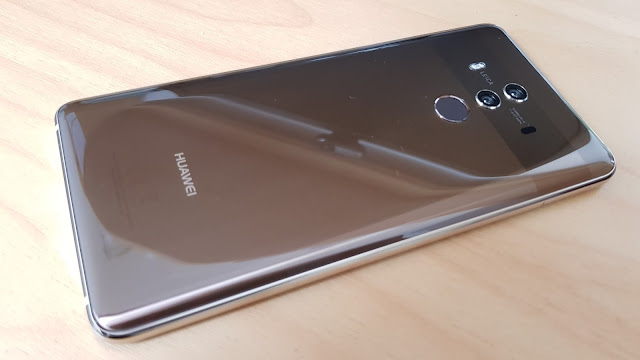One feature in particular is so groundbreaking and unique, on reflection, I've decided to give it a bit more attention than the two and a half line paragraph it got in the original story...
Huawei Mate 10 Desktop Mode is more than just a gimmick; it has the potential to turn your phone into one of the most versatile business tools you can imagine.
If you currently do business on the road, or you're required to travel as part of your job, either nationally or internationally, chances are you're already using your phone to carry out tasks many other people perform at their desks.
Staying in contact via email, social media, maintaining your calendar, web stuff... all of these things can be handled with your handset - to one degree or another.
However, when it comes to creating and managing documents and presentations, or editing pictures and video, that's usually when the laptop comes out of the bag. By choosing a Huawei Mate 10, you may well be able to leave that laptop behind altogether.
What's more, the only extra piece of equipment you'll need is a single USB-C to HDMI cable so you can connect your phone to any screen with a spare HDMI port.
You'll be presented with a PC desktop-like screen seconds after you plug the phone in but unlike other similar systems I've trialled, your Mate 10 phone remains fully functional as a phone, even while it's running your new desktop experience.
Alternatively, you can choose to use your phone as a virtual track pad and keyboard.
These options are very easy to find and simple to use.
Obviously the most efficient setup of all is to add a bluetooth or wireless keyboard/mouse into the equation, which is exactly how I'm writing this review now. It works, it's so straightforward and once you start working through all the practical uses, it starts to sound a bit essential.
Let's just think about the practicalities involved moving through places like airports without having to worry about taking a laptop out every time you go through security, finding somewhere to stow it on planes with the rest of your carry-on. Even hefting less weight around has to be a bonus.
Now consider how much more connected you can be in your hotel room - if it has a TV, it has an HDMI port for you to plug into. This of course means you now have total desktop access to your work files, both stored on your phone and in the cloud. Even better, once you've clocked off you're no longer restricted to whatever channels the hotel has to offer; your Netflix favourites can be easily shown from your phone onto their screen.
Then, perhaps the next day when you arrive in that overseas office for your big presenation, there's no special projector software or WiFi network password chaos involved - just plug in the Mate 10 and your phone is the exact same, familiar presentation device you practiced on back in your hotel room.
No laptops involved.
Even gaming is possible, because unlike the screen mirroring function other devices rely on, there's virtually no lag when connected via a physical cable.
One big negative for me is the battery issue. Running HDMI is relatively power intensive and although you're connected via the Mate 10's charging port, don't be fooled into thinking that cable is charging the phone at the same time. Especially if you've connected a wireless keyboard and mouse too, you're battery life is going to seep away pretty much before your eyes.
Oh, you'll still have plenty of juice for that presentation or movie, but probably not a Star Wars triple feature!
Luckily, the Mate 10 Series phones all support Huawei’s SuperCharge fast charging system, so it shouldn't take too long to get all topped up again.
For sheer convenience, portability and ease of use, Huawei Mate 10 Series Desktop Mode is something any regular business traveller needs to investigate.











